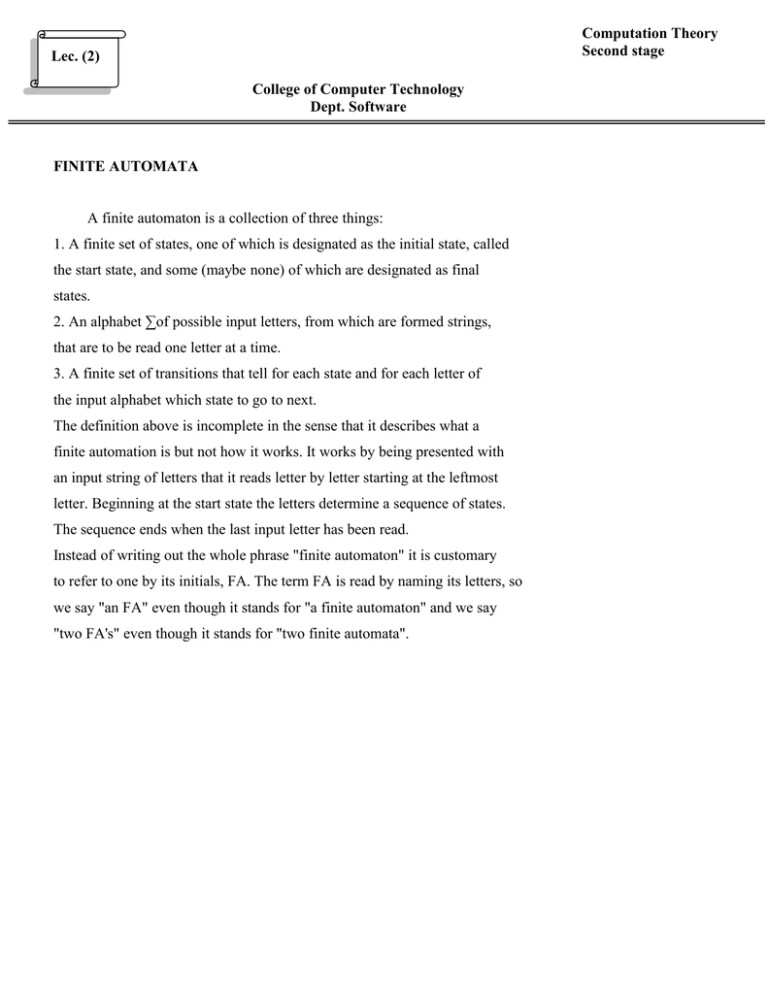

The fundamental idea behind FSM design is that a large class of software problems can be viewed from the perspective of state machines and can therefore be solved using methods borrowed from other disciplines, particularly digital electronics. It lends itself to design-by-committee and peer reviews.It can incorporate an effective debugging tool with minimal effort.It creates a useful documentation and maintenance product that reflects the organization of the code.
Finite state automata software code#

This article is a brief and practical tutorial in designing software using finite state machines.

A variety of design patterns could be applicable at various stages of a software project, from the initial overall concept to the lowest level coding phase. A finite state machine (FSM) is one design pattern other patterns not discussed here include consumer/producer, message queuing, master/slave, and so forth. However, the concerns for good software engineering and software quality indicate that any design method that is simple to use and that helps create better code and documentation should be welcomed by the majority of software practitioners.Ī common approach these days is to apply design patterns when planning and implementing a software project. Experience has convinced them that there may not be a design method appropriate for their project or that any formal planning wastes too much time without significantly enhancing the quality of the final product. When creating new software, many programmers find it easier to just start coding without any prior formal plan. The initial creative steps are fraught with risk and uncertainty, since they define the entire course of development for a software project and affect its outcome and success. Designing software can be a bewildering and stressful experience.


 0 kommentar(er)
0 kommentar(er)
